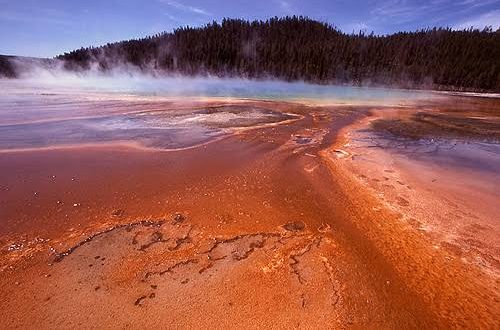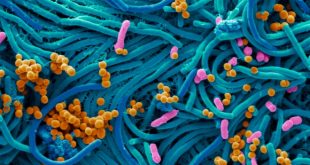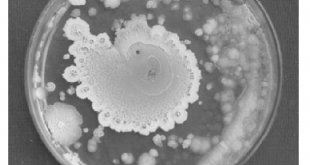WHAT IS EXTREME ENVIRONMENT?
An extreme environment exhibits conditions which are challenging for most life forms. These may be extremely high or low ranges of temperature, radiation, pressure, acidity, alkalinity, air, water, salt, sugar, carbon dioxide, sulfur, petroleum and many others.
An extreme environment is one place where humans generally do not live or could die there. There are organisms referred to as extremophiles, that inhabit these spaces and are so well-adapted that they readily grow and multiply.
Best safe and secure cloud storage with password protection
Get Envato Elements, Prime Video, Hotstar and Netflix For Free
Best Money Earning Website 100$ Day
#1 Top ranking article submission website
EXAMPLES OF EXTREME ENVIRONMENT
- The geographical poles
- Very dry deserts
- Volcanoes, deep ocean trenches
- Upper atmosphere
- Mt Everest
- Outer space and some other planets
The organisms living in these conditions are often very well adapted to their living circumstances, which is usually a result of long-term evolution.
EXTREMOPHILE
An extremophile is an organism that thrives in extreme environments. Extremophiles are organisms that live in “extreme environments,” under high pressure and temperature. Bacteria often form on the rocks near the hydrothermal vents. The term frequently refers to prokaryotes and is sometimes used interchangeably with Archaea.
Different Types of Organisms in Different Extreme Environments
- Extreme in pH: Acidophiles (An organism that grows best at acidic (low) pH values) and Alkaliphiles (An organism that grows best at high pH values).
- Extreme in Temperature: Thermophiles (An organism with optimal growth at temperature 40 °C or higher) and Psychrophiles (An organism with optimal growth at temperature 15 °C or lower).
- Extreme in Pressure: Barophiles/Piezophiles (An organism that lives optimally at high hydrostatic pressure).
- Extreme in Dryness: Xerophiles (An organism capable of growth at very low water activity).
- Extreme in oxygen stress:
Anaerobic (An organism that can grow in the absence of oxygen.
Facultative Anaerobe: An organism that grows in the presence or in the absence of oxygen.
Obligate Anaerobe: An organism that cannot grow in the presence of oxygen; the presence of oxygen either inhibits growth or kills the organism. - Extreme in Saltiness: Halophiles (An organism requiring high concentrations of salt for growth).
- Extreme in toxic: Toxitolerant (An organism able to withstand high levels of damaging elements e.g., pools of benzene, nuclear waste).
- Extreme in Radioactivity: Radioresistant (Organisms resistant to high levels of radiation).
| Table: Parameters Defining “Extremophilic” |
| Extremophilic Condition | Approximate Definition |
| Hyperthermophilic | 70-130+ degree Celcius |
| Psychrophilic | -2-20 degree Celcius |
| Halophilic | 2-5M salt |
| Acidophilic | pH≤(4.5±0.5) |
| Alkalophilic | pH±(9±0.5) |
| Piezophilic | 10-80+MPa |
| Xerophilic* | aw<0.85 |
Another type of Organisms in Extreme Environments
Alkaline: broadly conceived as natural habitats above pH 9 whether persistently, or with regular frequency or for protracted periods of time. Alkaliphile
Acidic: broadly conceived as natural habitats below pH 5 whether persistently, or with regular frequency or for protracted periods of time. Acidophile
Extremely Cold: broadly conceived habitats periodically or consistently below 5°C either persistently, or with regular frequency or for protracted periods of time. Includes mountain sites, polar sites, and deep ocean habitats. Psychrophile
Extremely Hot: broadly conceived habitats periodically or consistently in excess of 40°C either persistently, or with regular frequency or for protracted periods of time. Includes sites with geological thermal influences such as Yellowstone and comparable locations worldwide or deep-sea vents. Thermophile
Hypersaline: (high salt) environments with salt concentrations greater than that of seawater, that is, >3.5%. Includes salt lakes. Halophile
Under Pressure: broadly conceived as habitats under extreme hydrostatic pressure—i.e. aquatic habitats deeper than 2000 meters and enclosed habitats under pressure. Includes habitats in oceans and deep lakes. Barophile (Piezophile )
Without Water: broadly conceived as habitats without free water whether persistently, or with regular frequency or for protracted periods of time. Includes hot and cold desert environments, and some endolithic habitats.
Without Oxygen: broadly conceived as habitats without free oxygen- whether persistently, or with regular frequency, or for protracted periods of time. Includes habitats in deeper sediments. Anaerobic (Facultative anaerobic and Obligate anaerobic)
Altered by Humans: heavy metals, organic compounds; Anthropogenically impacted habitats. Includes mine tailings, oil impacted habitats. Toxitolerent Adaptation
Since they live in “extreme environments” (under high pressure and temperature), they can tell us under which range of conditions life is possible. The unique enzymes used by these organisms, called “extremozymes,” enable these organisms to function in such forbidding environments. These creatures hold great promise for genetically based medications and industrial chemicals and processes. It’s important to note that these organisms are ‘extreme’ only from a human perspective. While oxygen, for example, is a necessity for life as we know it, some organisms flourish in environments with no oxygen at all.
Thermophiles: Geothermally heated regions, such as deep-sea hydrothermal vents or hot springs, are amongst the most extreme environments on Earth. But still there is life – thermophilic microorganisms flourish in such conditions, some even in boiling water. Methanopyrus kandleri, which has recently been isolated from black smoker fluid in the Kairei hydrothermal vent, is the current record holder. This archaeon is able to survive a temperature of 122°C and correspondingly high pressure.
Hyperthermophiles: Which have an optimum growth temperature above 80°C, have been described since the first one (Sulfolobus acidocaldarius) was discovered in hot springs in the Yellowstone National Park in the early 1970s. And there are many other species that are moderately thermophilic, thriving at temperatures above 50°C.
Thermophily has evolved independently several times. Most thermophiles belong to the Archaea (e.g. Pyrolobus fumarii, Pyrococcus furiosus and Pyrobaculum aerophilum), but also many bacteria can tolerate very high temperatures (e.g. Thermotoga maritima, Thermus aquaticus and Aquifex aeolicus). Some molecular phylogenetic analyses suggest that these thermophilic bacteria represent an early evolutionary divergence. However, other bacterial thermophiles are evidently of more recent origin and, even though their phylogenetic position is not yet fully resolved, have most likely evolved independently.
Archaea and Bacteria are similar in that they are both single-celled prokaryotic microorganisms with cell walls and circular DNA. However, archaeal cell walls lack peptidoglycan universal to all bacterial cell walls and instead contain pseudomurein (or pseudopeptidoglycan),
What are Extremozymes?
Extremozymes are enzymes derived from an extremophile. Its structure is still undergoing study because researchers are trying to understand how it is able to stay alive even under conditions where related molecules in organisms adapted to more temperate climates die.
Thermophilic Enzymes and Structural Stability:
- A primary hypothesis lies in the belief that thermophilic enzymes are more rigid than their mesophilic counterparts as a direct result of amino acid sequence and 3-dimensional structure in high heat, where other enzymes would unfold and no longer work.
- It has been noted that an increase in extremozyme stability at high temperatures is associated with increased guanine-cytosine base pairs with the maximal three hydrogen bonds.
- It has also been hypothesized that thermophilic enzyme amino acid sequences contain much higher concentrations of certain amino acids.
- Another hypothesis is that thermophilic enzymes have an unusually large number of solvent molecules within their cores. The increase in the aforementioned amino acids leads to a nearly two-fold increase in the solvent-accessible area as opposed to the inaccessible area (Saunders et al 2003). This indicates that the unusually large number of solvent molecules within thermophilic enzyme cores is a result of the increase of specific amino acids. Surface ion pairs and these solvent filled cavities may provide an extra degree of protection to prevent denaturation under high heat by increasing overall structural stability (Dawson and Hough 1998).
- Salt links and hydrogen bonding may also be a key component of enzyme stability in thermophiles, as they would stabilize both tertiary and quaternary structure in resistance to denaturation.
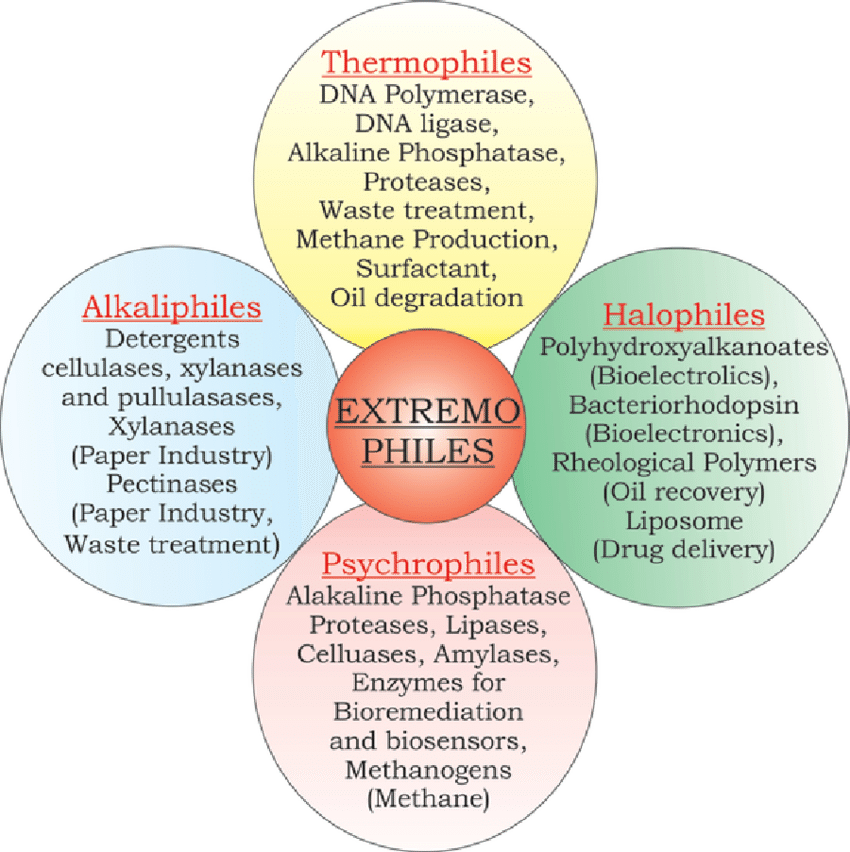
Importance of Thermophiles
Soon after their discovery, the heat-stable enzymes of thermophiles proved to be very importaThermus aquaticus and Tnt to the field of biotechnology. For example, two thermophilic species Thermus aquaticus and Thermococcus litoralis are used as sources of the enzyme DNA polymerase, for the polymerase chain reaction (PCR) in DNA fingerprinting. As thermophiles have become increasingly important in biotechnological research, the number of bioprospecting groups searching for useful organic compounds in nature have dramatically increased as well.
The study of extreme environments has considerable biotechnological potential. For example, the two thermophilic species Thermus aquaticus and Thermococcus litoralis are used as sources of the enzyme DNA polymerase, for the polymerase chain reaction (PCR) in DNA fingerprinting, etc. The enzymes from these organisms are stable at relatively high temperatures, which is necessary for the PCR process which involves cycles of heating to break the hydrogen bonds in DNA and leave single strands that can be copied repeatedly. Another thermophile, Bacillus stearothermophilus (temperature maximum 75oC) has been grown commercially to obtain the enzymes used in ‘biological’ washing powders.
Applications of extremozymes
1. Molecular biology: Employing hyperthermophilic DNA polymerases in the Polymerase Chain Reaction (PCR); use of extremophilic DNA ligases in genetic engineering. Taq (Thermus aquaticus), a thermophilic bacterium and extremozyme, is used in DNA testing and fingerprinting.
2. Starch hydrolysis and processing: Using alpha-amylases, beta-amylases, glucoamylases, alpha-glucosidases, pullulanases, amylopullulanase, glucose isomerases, and xylose isomerases to produce such products as oligosaccharides, maltose, glucose syrups, high fructose syrups.
3. Chemical synthesis: Ethanol production; production of aspartame; production of chiral intermediates for synthesis of pharmaceutical active ingredients.
4. Cellulose and gum degradation and processing: Paper and pulp bleaching by xylanases; cellobiohydrolases, beta-glucosidases and beta-glucanases for cellulose hydrolysis; thermostable cellulases.
5. Food and feed processing: Pectinases, cellulases, and chitinases; galactosidases for lactose hydrolysis; and phytases for dephosphorylation of phytate in animal feed during high temperature processing.
6. Medical treatments and diagnostic devices: Peroxidases, phosphatases, oxidases, carboxylases, and dehydrogenases.
7. Detergents and household products: Thermophilic proteases, alkalophilic proteases; and, alkaline amylases.
8. Other industrial applications: Biomining and bio-leaching of minerals, bioremediation, remediation of radioactive wastes, antioxidation systems.
Photo Gallery:
High salinity of the dead sea

Volcano

Hydrothermal vent
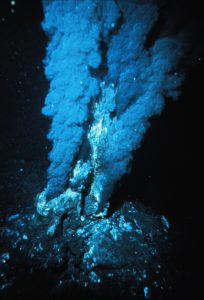
Mount Everest

Atmosphere and universe

Desert

Revised by
- Md. Siddiq Hasan on 27 July,20
- Md. Siddiq Hasan on 10 March, 21
Best safe and secure cloud storage with password protection
Get Envato Elements, Prime Video, Hotstar and Netflix For Free
 Plantlet The Blogging Platform of Department of Botany, University of Dhaka
Plantlet The Blogging Platform of Department of Botany, University of Dhaka
